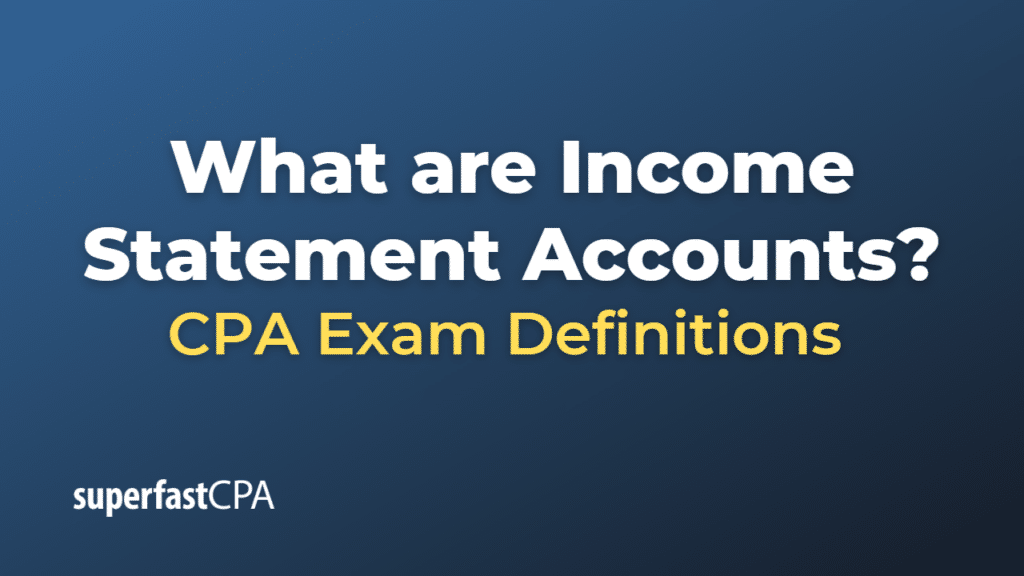Income Statement Accounts
Income statement accounts, also known as temporary or nominal accounts, are the accounts that a company uses to track revenues, expenses, gains, and losses over a particular period of time. These accounts start each accounting period with a zero balance, as opposed to balance sheet accounts (real or permanent accounts), which carry their ending balance into the next accounting period.
The main categories of income statement accounts include:
- Revenue Accounts: These accounts track the income generated from the sale of goods and services. Examples include Sales Revenue, Service Revenue, and Interest Revenue.
- Expense Accounts: These accounts record the costs incurred to earn revenues. Examples include Cost of Goods Sold, Salaries Expense, Rent Expense, Utilities Expense, Depreciation Expense, and Interest Expense.
- Gain and Loss Accounts: These accounts are used to record the financial results of non-operating activities. Gains and losses usually result from the sale or disposal of non-current assets, such as property, plant, and equipment. For example, a Gain on Sale of Equipment account would record the excess of the sales price over the book value of the equipment sold.
- Income Tax Expense Account: This account records the company’s expense related to income taxes.
At the end of each accounting period, the balances in these accounts are transferred to a permanent equity account, typically Retained Earnings (for a corporation), effectively resetting the income statement accounts to zero in preparation for the next period.
By segregating financial transactions into different income statement accounts, businesses can accurately track revenues, expenses, gains, and losses, allowing them to analyze their financial performance, profitability, and operational efficiency over time.
Example of Income Statement Accounts
Let’s consider the example of a small business, “Cozy Coffee Shop,” that operates for one year, from January 1, 2023, to December 31, 2023. Below are some of the key income statement accounts:
- Revenue Account
- “Sales Revenue”: This account would track all income generated from selling coffee and other products. Let’s say the total for the year is $100,000.
- Expense Accounts
- “Cost of Goods Sold (COGS)”: This account would track the cost of the coffee beans and other ingredients used to make the products sold. For example, this might be $30,000 for the year.
- “Rent Expense”: This account would track the cost of renting the space for the coffee shop. If rent is $1,000 a month, the total for the year would be $12,000.
- “Wages Expense”: This account would track the cost of paying employees. If the total wages for the year amount to $40,000, this would be recorded in this account.
- “Utilities Expense”: This account would track the cost of utilities like electricity and water. Suppose this adds up to $3,000 for the year.
- Income Tax Expense Account
- “Income Tax Expense”: This account would record the income tax on the shop’s earnings for the year. If the tax rate is 20% and the shop’s earnings before taxes is $15,000 ($100,000 – $30,000 – $12,000 – $40,000 – $3,000), the income tax would be $3,000.
At the end of the accounting period (December 31, 2023), the net income would be calculated as $12,000 ($15,000 – $3,000), and this would be transferred to the “Retained Earnings” account. All the income statement accounts would then be reset to zero for the next accounting period.
This example is simplified and may not include all possible income statement accounts a real business would have. However, it provides a basic understanding of what income statement accounts are and how they work.












